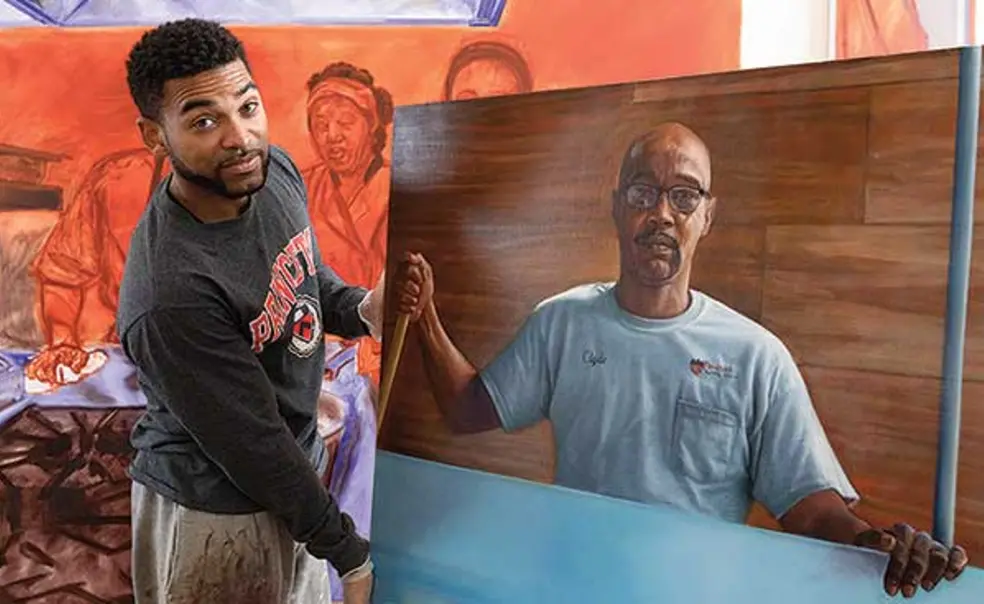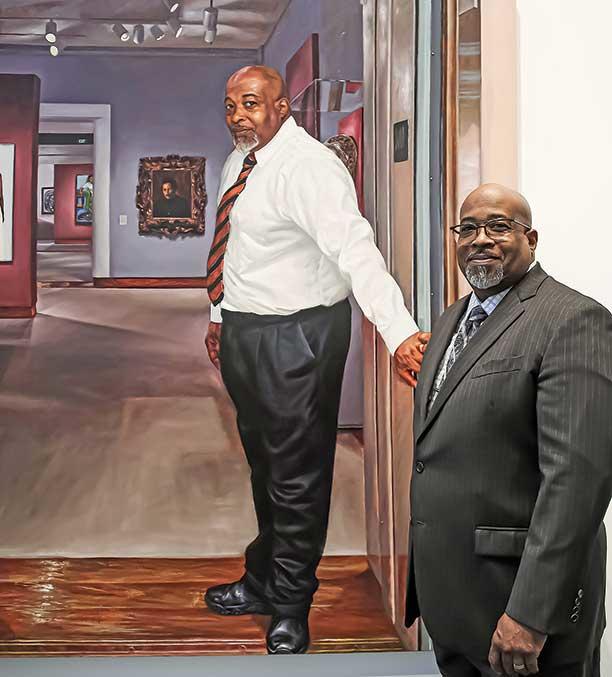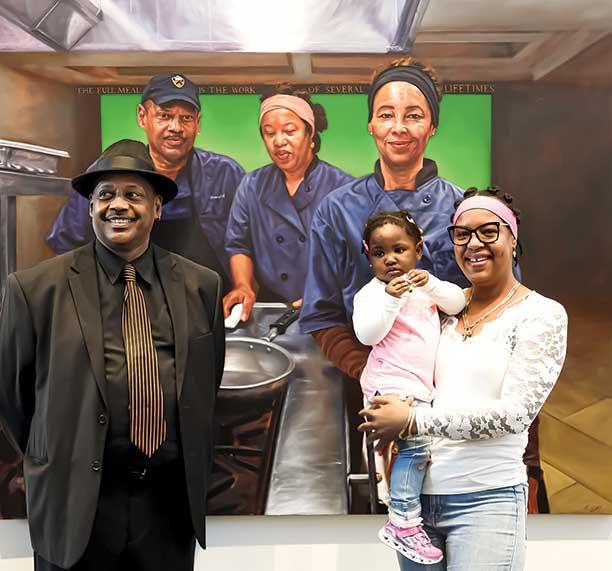‘Who Deserves to be Recognized’: Seeing Campus Workers in a Different Light
Challenging social perceptions is the goal of artist Mario Moore’s series of portraits, “The Work of Several Lifetimes,” which showcases black men and women in blue-collar jobs around the Princeton campus.
Moore said he was inspired by his father, who worked as a security guard. “Generally, portraits at elite institutions are created to represent owners, donors, deans, presidents, and scholars,” he wrote in his artist statement. “But I wanted to ask the question ... Who deserves to be recognized?”
During his Hodder Fellowship last year, Moore began work on the series by walking around campus, meeting people, and starting to sketch them. The portraits were unveiled during a ceremony Sept. 19 and will be featured in the Hurley Gallery at the Lewis Arts complex through Nov. 17.
Kaniesha Long, a Campus Dining employee who is featured with two co-workers in the portrait Several Lifetimes, said she was blown away by the art. “I’m proud to be in the picture,” she said.
Others who were featured in the paintings also beamed with pride as they posed with their portraits during the opening reception. Moore said his work explores “a sense of power and individuality,” and that he hopes those who view the portraits will see the workers “in a different way.”














1 Response
Rocky Semmes ’79
6 Years AgoEgo and Portraiture
There is talent and genius in artist Mario Moore’s quotidian portrait series “The Work of Several Lifetimes” (On the Campus, Oct. 23), and though long overdue, the equalizing effort misses the whole error of portraiture in general. The genre has its place, of course, but where it lends itself to the worship of ego is where it misses the mark. Ego is no champion for all, but alone for itself, serving none other than itself.
The single greatest act of our U.S. Congress would be to remove all statuary and portraiture from its chambers and corridors to a museum of history, replaced perhaps by landscapes reflecting the beauty of the continent. This could serve as a reminder that the nation was dedicated to and built upon beauty — the beauty of pure ideals, not imperfect personalities. We are a nation founded upon the beautiful ideas of liberty, freedom, and the pursuit of happiness.
Mario Moore’s thoughtful work is absolutely an important step in the right direction, but the journey remains far from over.
Editor’s note: The University is acquiring nine of the works by the artist in this series of portraits.